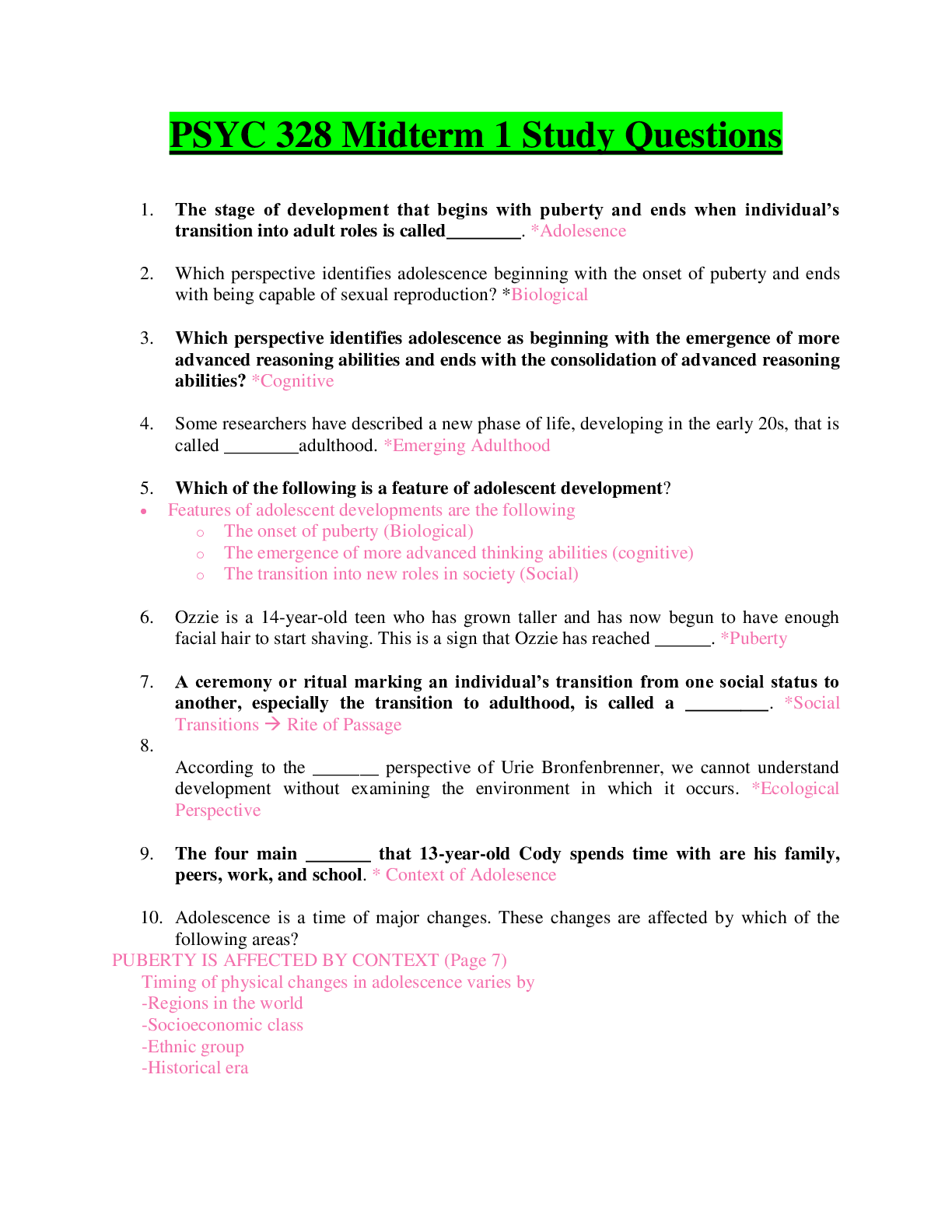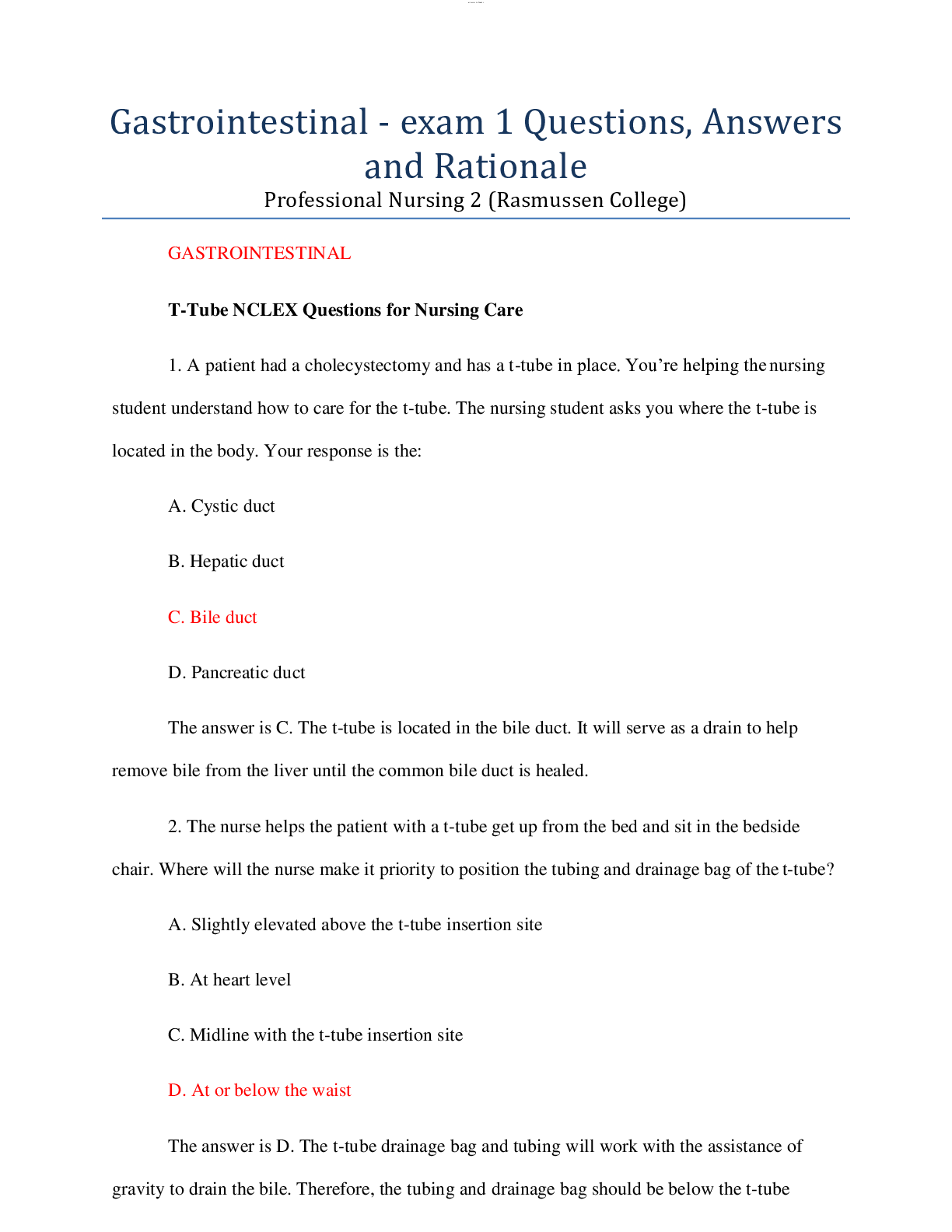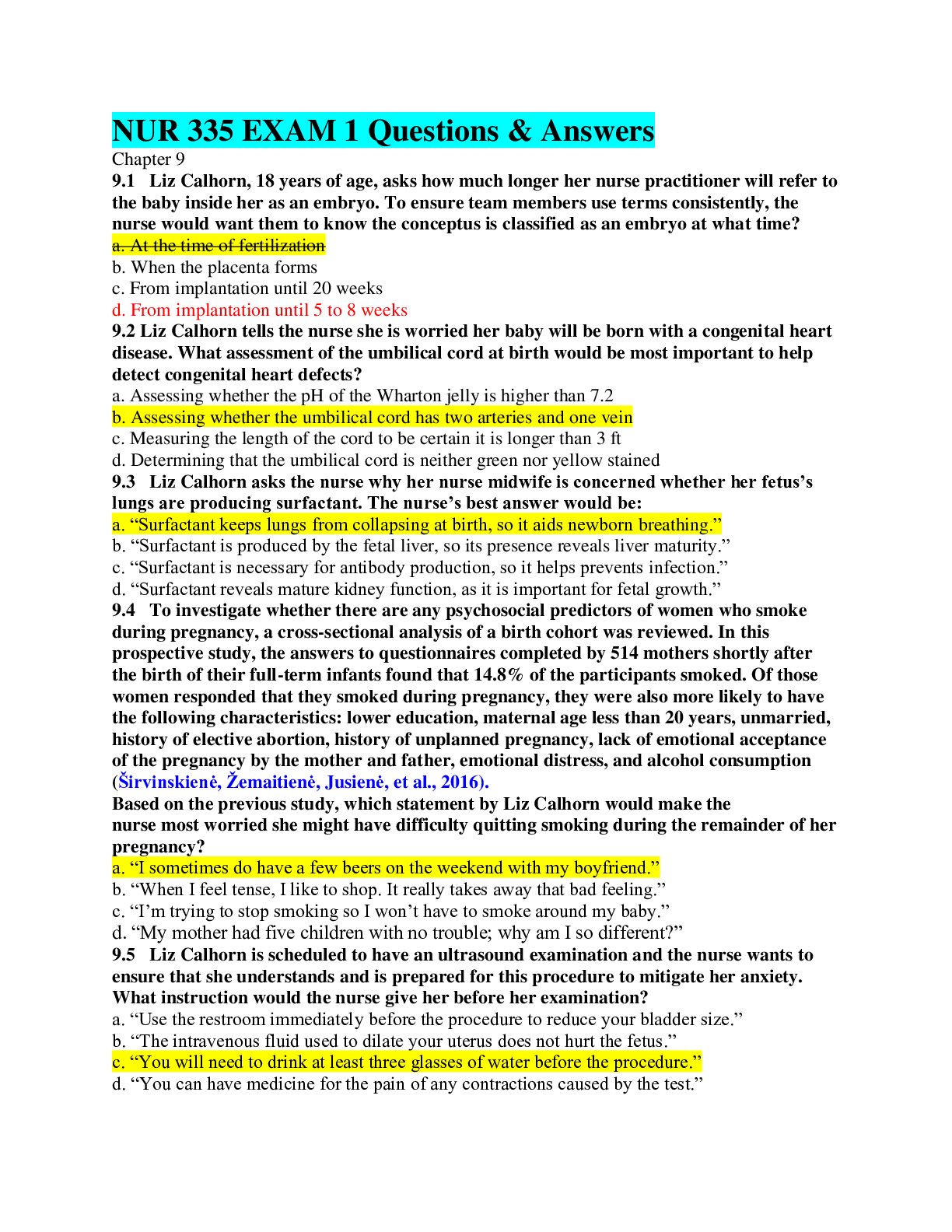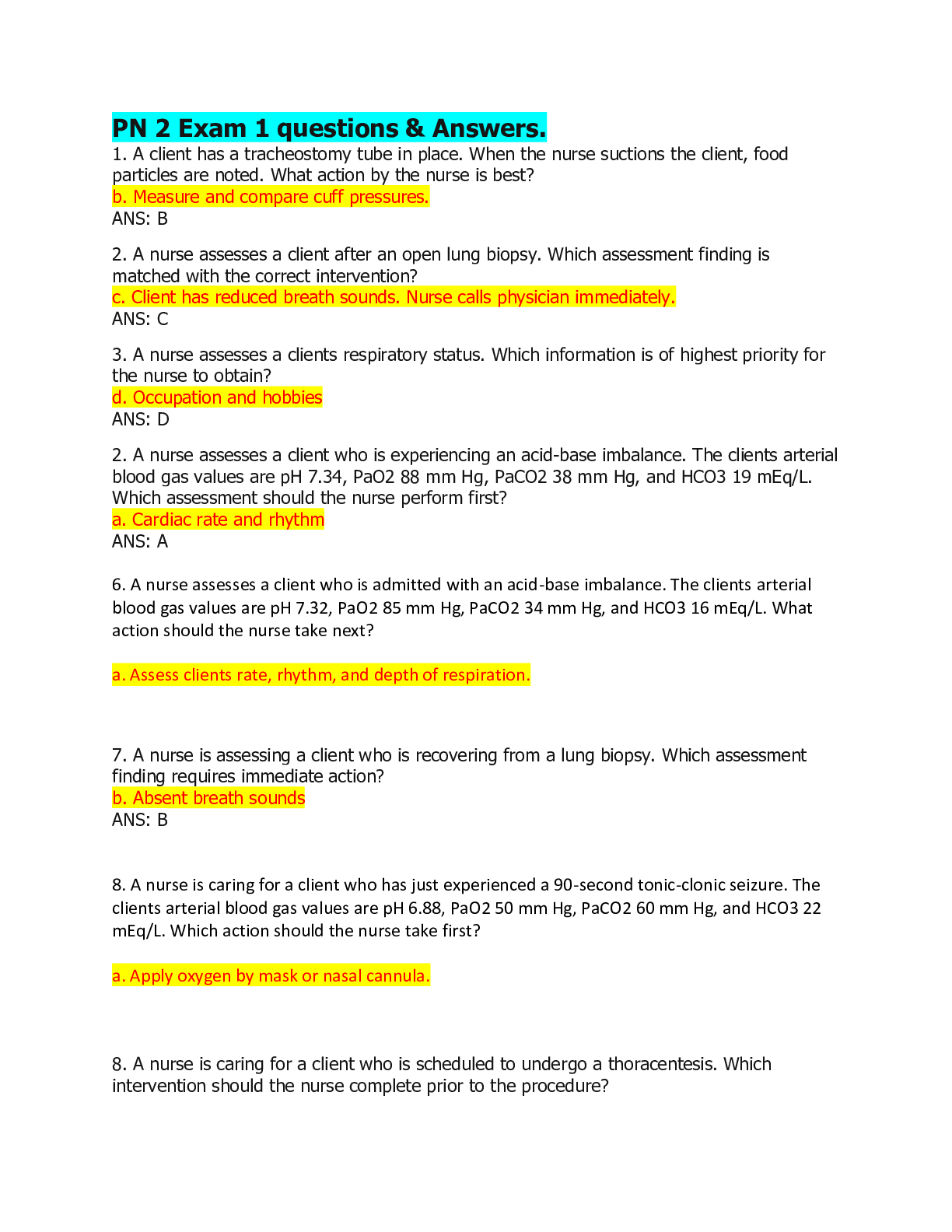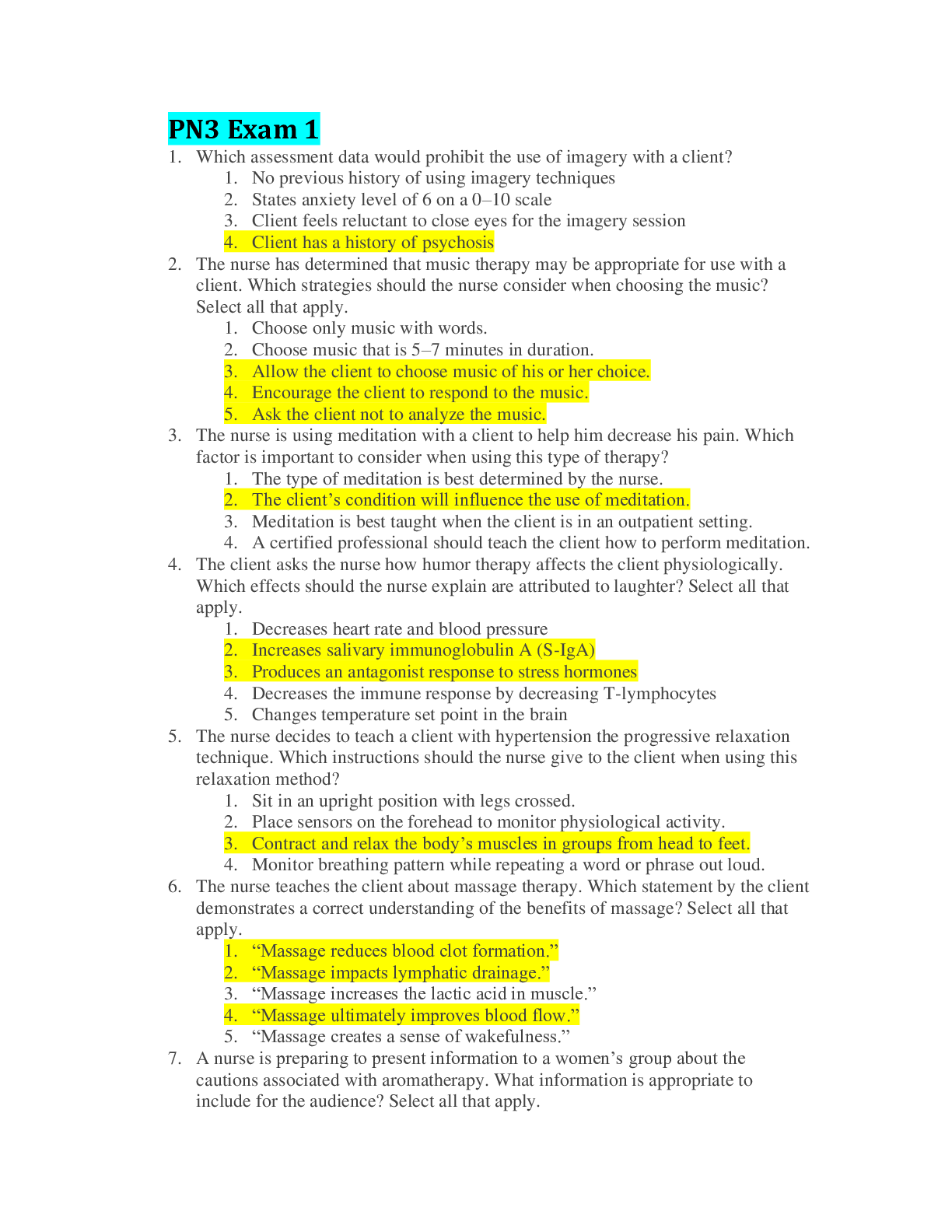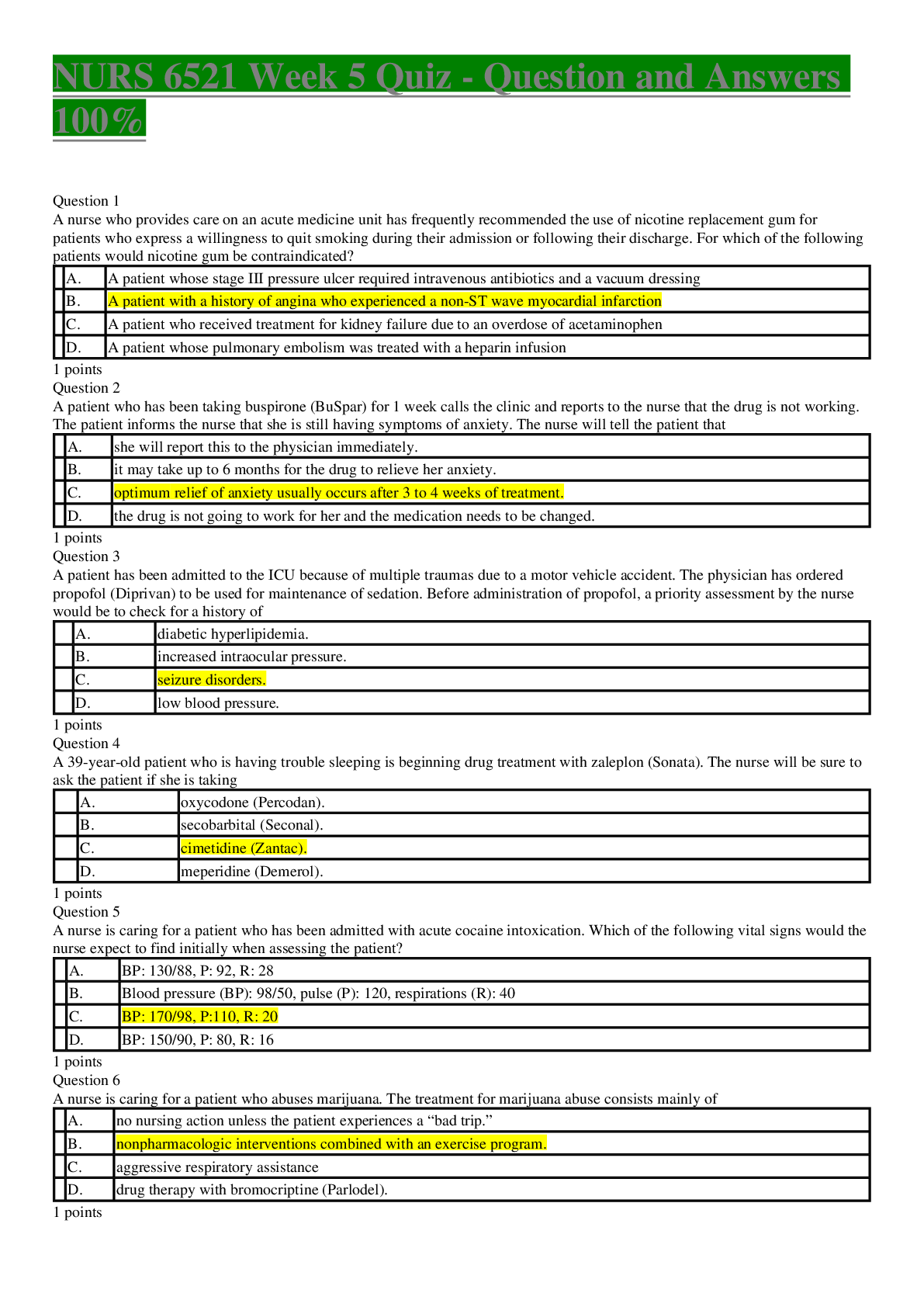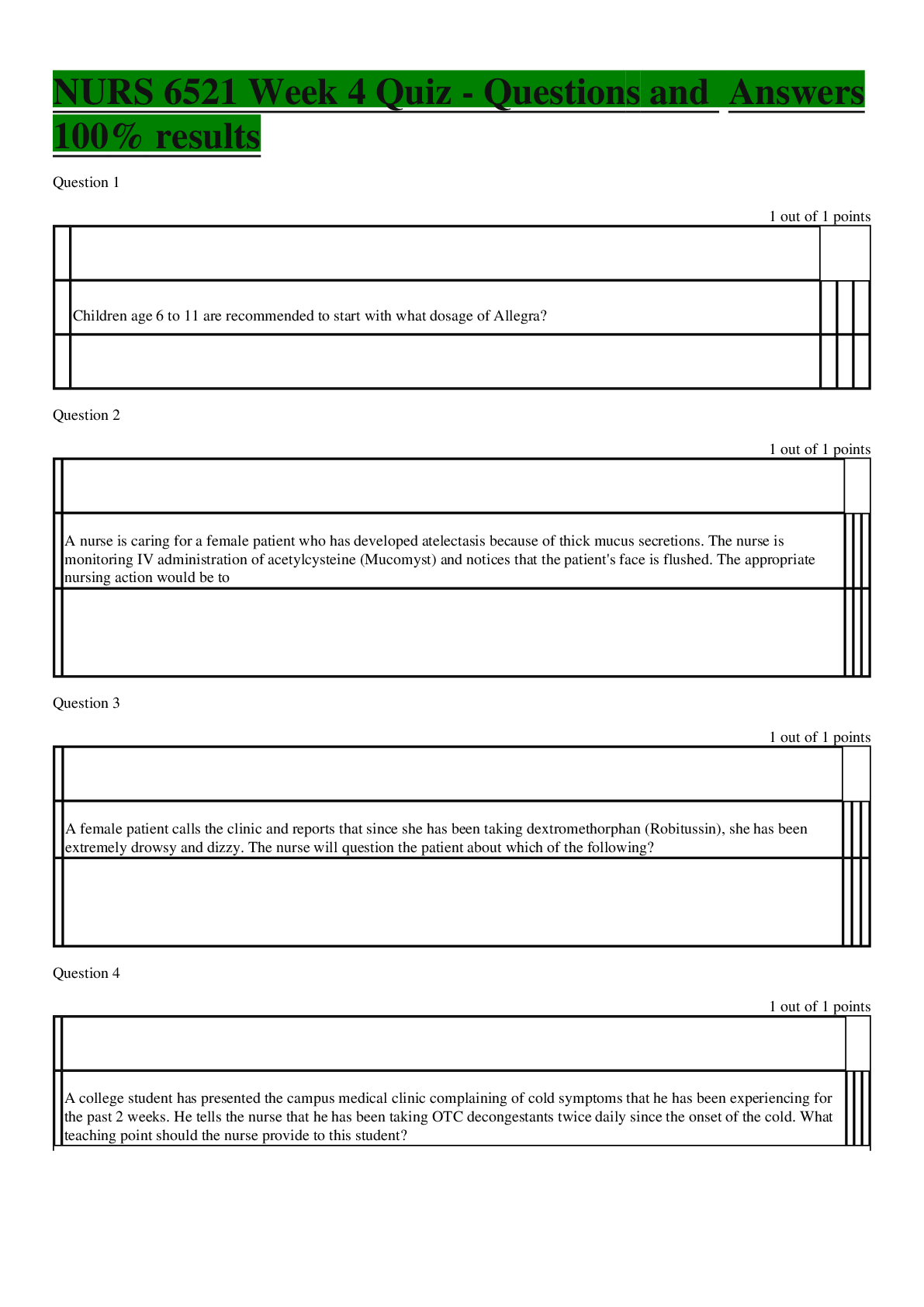BioChemistry > QUESTIONS & ANSWERS > Biochemistry Module Exam 1 Questions and Answers 100% Pass (All)
Biochemistry Module Exam 1 Questions and Answers 100% Pass
Document Content and Description Below
Biochemistry Module Exam 1 Questions and Answers 100% Pass True or False: According to the Module, a compound with a molecular mass of 1,000 g/mol is considered a macromolecule. ✔✔False True o... r False: Biomolecules can have only two functional groups. ✔✔False True or False: The following functional group is an alcohol. ✔✔False True or False: In a eukaryotic cell, the organelles called peroxisomes serve the purpose of digesting macromolecules. ✔✔False True or False: Carbon dioxide has a linear molecular shape AND has a bond angle of 109.5 degrees. ✔✔False Of the following, ____________ is not a property of carbon. ✔✔possessing five valence electrons Which of the following is an element not typically found in living organisms? ✔✔He _____________ is a functional group found in carbohydrates. ✔✔Alcohols The following functional group is an example of _________. ✔✔Ketone A ___________ is a chemical formula that does NOT show the C-H and C-C bonds. ✔✔Condensed formula A collection of two or more macromolecules uniting is called a _______. ✔✔Supramolecular complex An organic compound with this structure, C=C, contains a ________ functional group. ✔✔Alkene Scientists refer to ________ as the "super glue" of the chemistry. ✔✔C What molecule is most important for energy storage in cells? ✔✔ATP What would be the approximate size of a human cell? ✔✔12 μm For propane, there ________ carbon and ________hydrogen atoms. ✔✔3, 8 For an organic compound, which structure is the most efficient to draw? ✔✔Line bond When writing an organic functional group, scientists often write an "R" as part of the structure. What does the R indicate? ✔✔Rest of the molecule According to the module, the study of Non-carbon compounds is referred ____. ✔✔Inorganic chemistry Which of the following is not a functional group discussed in this module? ✔✔All of these were discussed. Which number would be closest to the approximate number of ribosomes in an E. coli cell? ✔✔25,000 Which of the following would most likely have a cell wall? ✔✔Marigold flower cells Eukaryotes have molecules that provide protective structural. This network is called the _____________. ✔✔Cytoskeleton The molecule linked to the medical condition of gout is __________. ✔✔Uric acid About how many different elements are found in living organisms? ✔✔30 (Short response) Explain the common similarity in all prokaryotic and eukaryotic cells. Give a brief explanation of the similarity. ✔✔Each cell type has a plasma membrane that separates life from non-life. The plasma membrane acts as a barrier to most molecules but does have proteins that permit select molecules to cross via proteins (transporters). (Short response) Would scientists be more likely to find an element such as O in a biomolecule, or W? Explain which she would more likely find in biological molecule and give specific physical/chemical properties. ✔✔She would more likely find O. Smaller elements are preferred. Smaller elements with smaller atomic shells are favored because they can form stable covalent bonds, allowing cells to form, hair to grow, and skin to protect against abrasion. (Short response) What element is the basis for life? Describe at least two properties of this element that permit it to serve the basis for life. ✔✔1. Carbon can form strong covalent bonds with a variety of different elements. 2. Carbon can form double and triple bonds with other carbon atoms and other elements (N and o). (Short response) How does organic chemistry differ from inorganic chemistry? ✔✔Organic chemistry is the study of the carbon-based compounds. Inorganic chemistry is the study of all other elements, but carbon. (Short response) Biochemists study the communication within and among organisms. According to the module, what are two other aspects of living organisms that biochemists study? ✔✔Biochemists also study the structure and function of biomolecules and the chemical reactions of organisms. [Show More]
Last updated: 1 year ago
Preview 1 out of 5 pages
Instant download
.png)
Buy this document to get the full access instantly
Instant Download Access after purchase
Add to cartInstant download
Reviews( 0 )
Document information
Connected school, study & course
About the document
Uploaded On
Feb 12, 2023
Number of pages
5
Written in
Additional information
This document has been written for:
Uploaded
Feb 12, 2023
Downloads
0
Views
58

.png)
.png)
.png)
.png)
.png)
.png)
.png)
.png)
.png)
.png)
.png)



